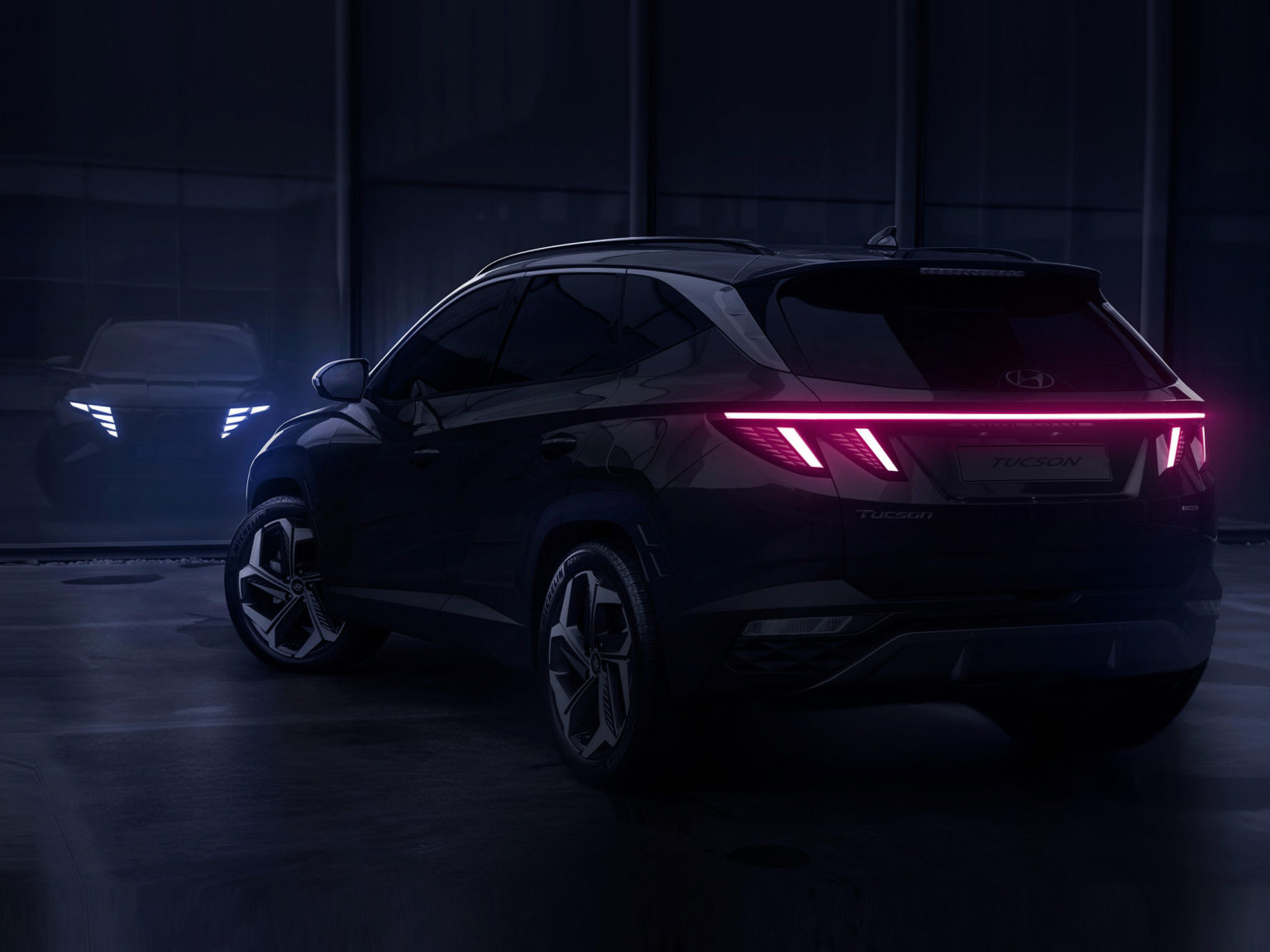The fourth generation of the Hyundai Tucson crossover will be revealed on September 15. Ahead of that, the Korean automaker has released three images giving a good picture of what to expect from the new SUV, which looks to be a product-ready version of the model first shown as the Vision T concept car at last year’s LA Auto Show.
Its body styling is another iteration of the company’s Sensuous Sportiness design mantra, which also helped shape the 2021 Hyundai Elantra and 2020 Hyundai Sonata.
Hyundai’s new headlight design is only visible when illuminated.Photo courtesy of Hyundai Motor America
“The mission of ‘Sensuous Sportiness’ is to elevate the emotional qualities of automotive design. We want our customers to feel moved. With the all-new Tucson, we are introducing its ultimate evolution and a definitive statement about Hyundai’s unstoppable forward momentum,” said SangYup Lee, Senior Vice President and Head of Hyundai Global Design Center. “Tucson’s advanced, experimental design is true to its pioneering spirit and raises the game in the industry’s most competitive segment.”
The 2022 Hyundai Tucson will be bigger and wider than the previous generation. It looks to fill a gap left by the reconfiguration of the Santa Fe, which made room for the Palisade, possibly as a new Nissan Murano, Honda Passport, Chevrolet Blazer, and Toyota Venza competitor. It will be available in two wheelbases: short and long. The availability of these will vary by market.
At its front are Parametic Hidden Headlights that incorporate the daytime running lights and their housing into the grille of the vehicle. Here, it’s realized as a “T” shape the that is similar to the new fascia on the refreshed Hyundai Santa Fe. The automaker says that the lights are only visible when they are illuminated.
The interior design of the Tucson is completely new for the automaker.Photo courtesy of Hyundai Motor America
Hyundai says that the new SUV’s body styling will allude a “slinky coupé-like character”. Again, this falls into line with what we saw in the Vision T concept. Hyundai further says, “Chiseled surfaces create a striking contrast between sleek silhouette and masculine wedge, suggesting forward motion even when standing still. Taut athletic shapes seamlessly merge into angular wheel arches where alloy wheels provide a powerful and dynamic stance.”
The cabin is designed to have a dual cockpit style layout. Like the Nissan Ariya, the Tuscon looks to employ a cabin design that exudes neatness as an intersection of space, technology, and information. Hyundai says that they have achieved this by removing the gauge cluster housing and increasing the feeling of openness.
The wide dashboard wraps around the SUV’s occupants, emphasizing spaciousness while the center fascia moves the eye upward and downward. Twin silver garnish lines flow from the center stack to the rear doors, bringing harmony to the design. Hyundai promises “neatly layered premium surface materials in complementary neutral tones.”
This center stack is a completely new design for Hyundai.
As for powertrains, Hyundai hasn’t given any direct, formal hints about what to expect, but it’s likely that the Tucson will feature hybrid and plug-in hybrid technology – and possibly even a battery electric variant.








